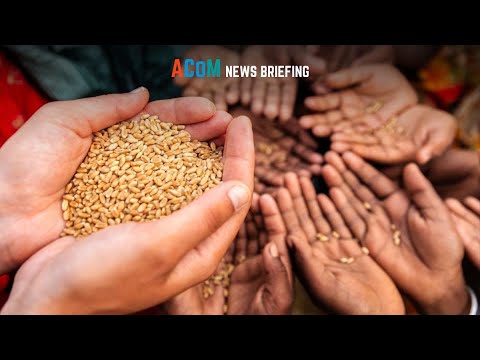Vidya Sethuraman
India Post News Service
Gaza is on the brink of famine. After nearly two years of war between Israel and Hamas, Gaza is in ruins. Over 60,000 people have been killed 18,000 of them children, according to UNICEF. The majority of Gaza’s 2 million residents have been displaced, left without homes, clean water, or consistent access to food.
For months, many have faced what international agencies now describe as catastrophic levels of hunger. UNICEF, the UN Fund for Children’s emergencies, last week called for more humanitarian and commercial traffic to come into Gaza, calling for “flooding the strip with supplies using all channels and all gates” to combat the spiraling death rates that accompany aid blockades, war and hunger.
ACoM media briefing on August 8 had conversation exploring the roots of this crisis, the conditions on the ground, and what must be done to protect the lives of Gaza’s children and families.
Alex de Waal, Executive Director, World Peace Foundation; expert on famine and mass atrocity, Fletcher School of Law & Diplomacy, Tufts University said after October 7, 2023, Israel implemented a comprehensive blockade. No supplies were allowed to enter for the first seven weeks, and then it was changed to partial release in an irregular amount every day.
At the same time, it launched air strikes and ground offensives to destroy food, water sources, medical facilities and other necessities for survival. According to the United Nations’ Integrated Food Security Phase Classification (IPC) data, in the past year the population of Gaza has been close to the highest warning line of famine for a long time.
Due to pressure from the United States, Israel has only temporarily increased aid to avoid breaking the critical point. A total lockdown started again in March this year, and food supply collapsed. Even if it was partially restored in mid-May, it was still not enough to fill the gap.
Budour Hassan, Amnesty International’s researcher on Israel and Palestine pointed out that Israel has long restricted the import of supplies to Gaza, but since October last year, the scale and severity have been unprecedented. She mentioned that during the short ceasefire, although more supplies came in, reconstruction was still hindered, including a ban on the import of heavy machinery, and the destruction of farmland and infrastructure. After the resumption of total lockdown in March, the situation worsened, with shortages of supplies such as infant formula and skyrocketing prices, exacerbating the famine.
Afeef Nessouli, Journalist and aid worker, just returned from 9 weeks volunteering in Gaza said that when he entered Gaza on March 27, many residents had already begun rationing food, and some people had lost nearly 40 kilograms in just a few months.
At that time, there was very little supply of fresh fruits and vegetables on the market, and the selling price of an onion was even equivalent to the price of a kilogram in the past. The number of community kitchens has plummeted from 170 to dozens, and many kitchens have been forced to close due to lack of supplies.
Nessouli pointed out that hunger and material scarcity are not accidental, but are the result of the intersection of multiple policies and military operations, resulting in residents being forced to compete for limited resources in order to survive under physical and mental pressure.
Also Read: UAE strongly condemns targeting of Hamad Prosthetics Hospital in Gaza Strip







